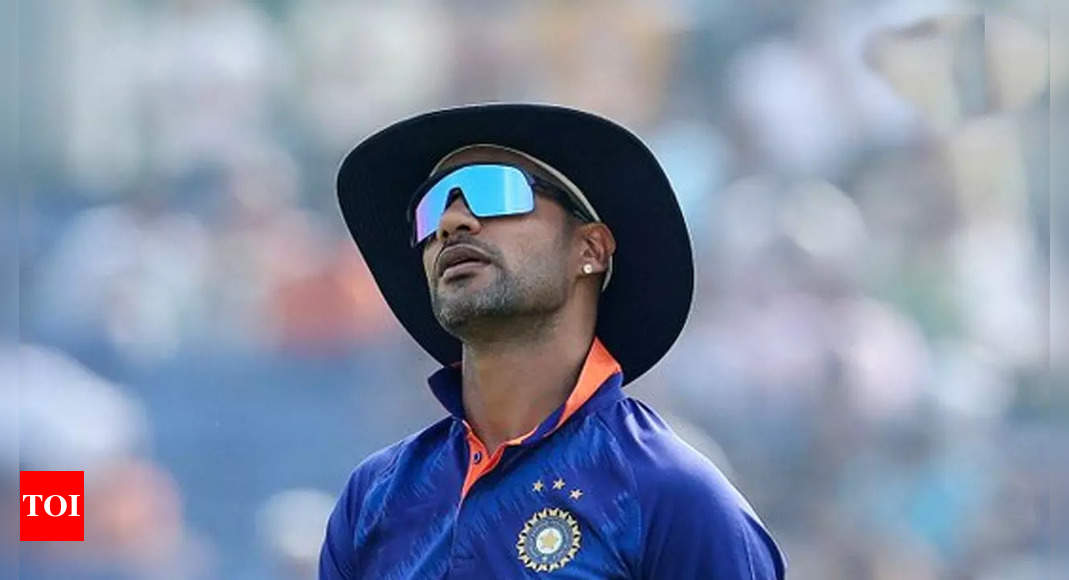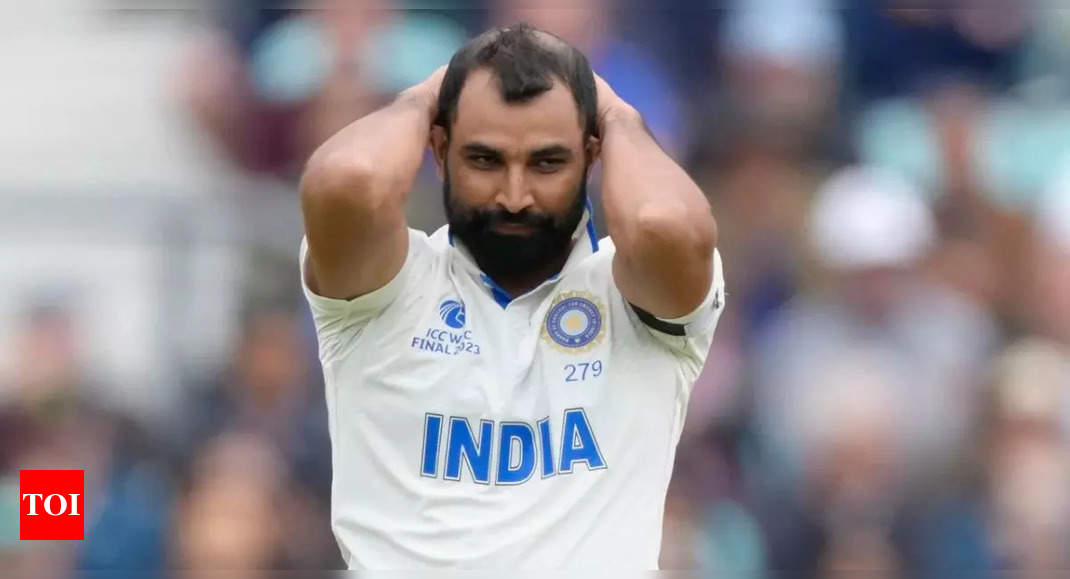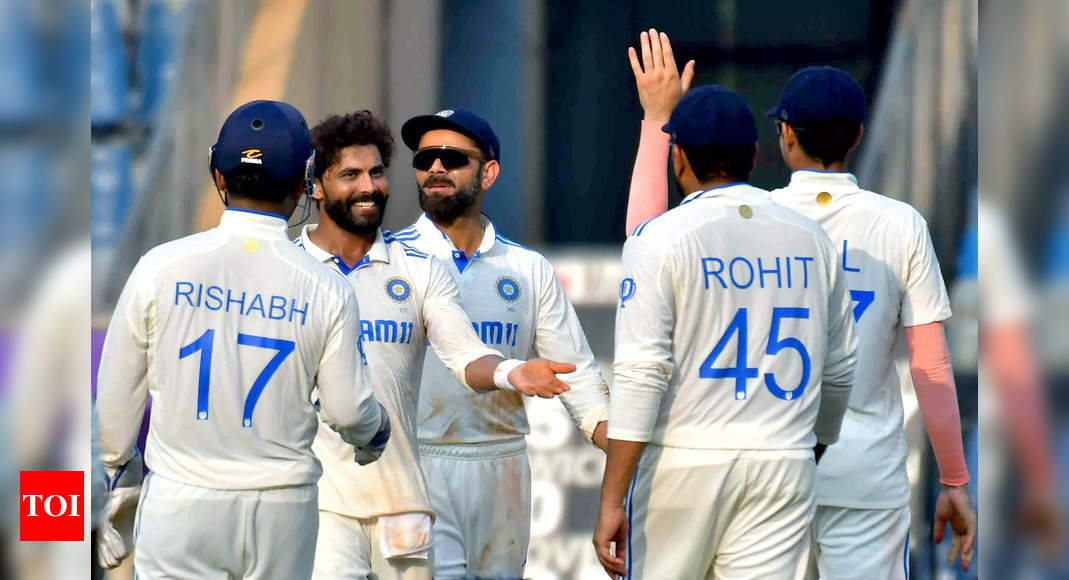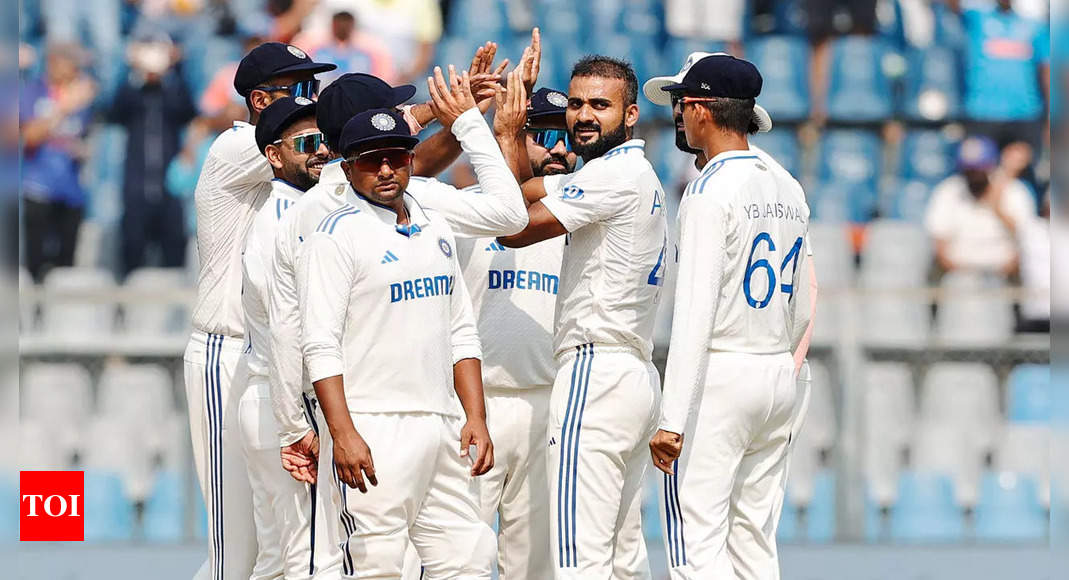Consider that the left-handed opener was already 52 first-class matches old, stretching back to November 16, 2004, when he finally got to make his ODI debut against Australia in Vizag in October 2010.His reward from the gods would be a two-ball duck.
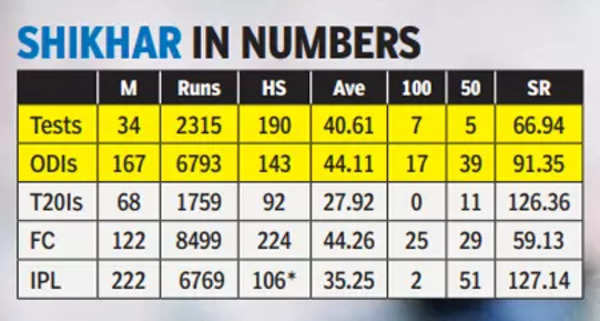
By the time of his famed Test debut at the age of 27 in March 2013 in Mohali — yet again against the Aussies — he had been long used to trudging his way across India’s dreary domestic landscape, where even big hundreds can sometimes go against you.
He had put in 81 first-class appearances. It was priceless experience but a number today’s fast-tracked T20 stars would be loath to consider an achievement. Before he blazed through to the fastest Test century on debut — the 85-ball record still stands — Dhawan had been written off as the quintessential cricketing journeyman.
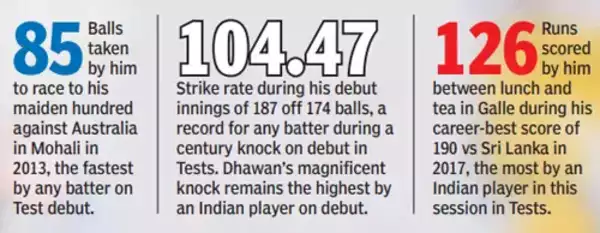
Cynics still referred to him as the hero of India’s 2004 U-19 World Cup campaign. Even the most weather-beaten Delhi club coach had doubts whether Dhawan’s technique would hold under international cricket’s piercing glare.
Hidden deep beneath that effervescent smile and casual air, though, was an extraordinary ability to ride the roughest wave. Dhawan knew something most people who interacted with him didn’t — he may be easygoing but as an active cricketer, he was deeply philosophical. He knew, more than most, that nothing goes according to the script. There’s no need to get all cut-up and angsty about it. Adapt. Move on. Be professional. There’s the other, real, life, and of course those problems need attention too. Don’t hold a grudge. Keep the faith. Keep believing.
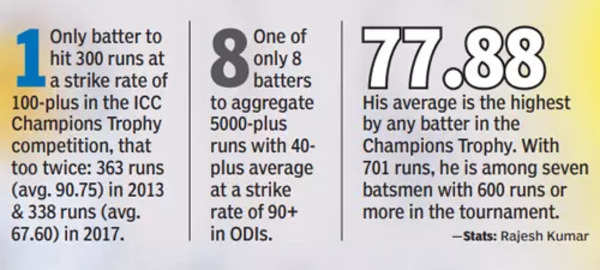
This surprising level of detachment and level-headedness helped him, in a relatively short span of time, to forge a legacy as a lef-thanded batter of distinction who delivered in high-pressure situations in 50-over cricket, especially in ICC tournaments.
It couldn’t have been easy because Dhawan’s career was full of surprises — of both the pleasant and nasty kind — and nothing that happened followed from before. As someone who replaced Virender Sehwag in Tests and was meant to extend the dominance of the Delhi school of batsmanship, Dhawan now retires not as a Test stalwart of renown but instead as an ODI giant, someone who gave his best when India needed to win the big global events.
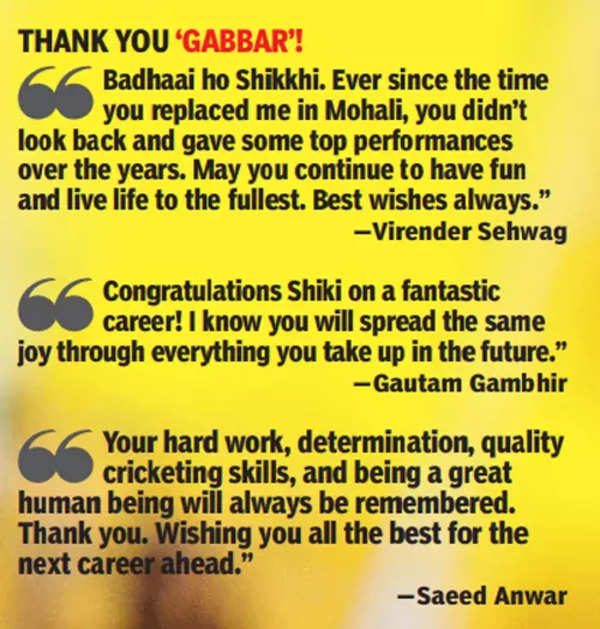
In ICC tournaments he averages 65.15, the best ever, and he played a prominent role in the 2013 Champions Trophy win. He forged 18 century stands with Rohit Sharma, the second best for an opening pair behind Ganguly and Tendulkar. His ODI career average of 44.11 is only behind Kohli, Dhoni, Rohit and Tendulkar. That makes Dhawan fifth best. He’ll take that, no questions asked.
“It is important to turn the page to move forward in a story, and in life,” Dhawan said in a video posted on social media. “I’m leaving with peace in my heart that I played so long for India. I’ve told myself not to feel sad that you won’t play for India again, but feel happy that you played for your country (at all).”
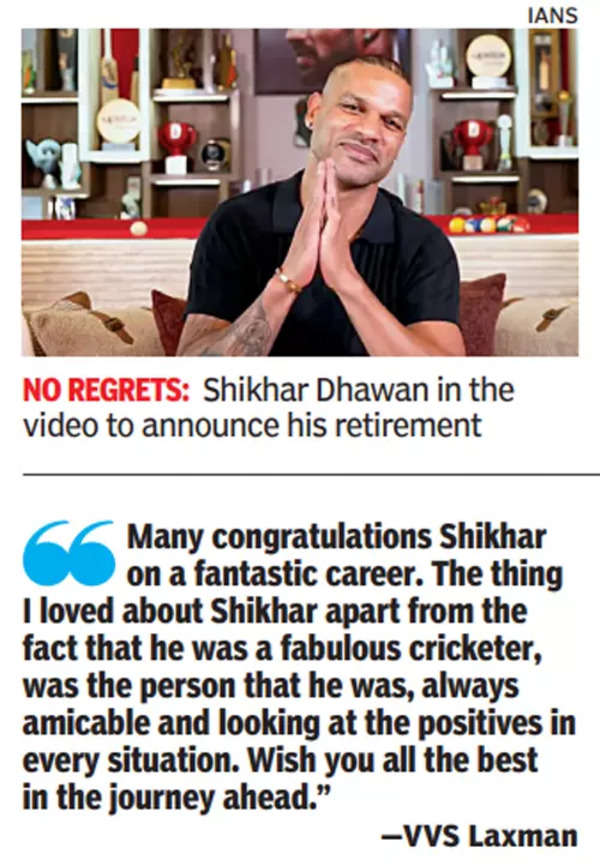
The statement is typical Dhawan. He was all aggressive strokeplay, cuts and off-side flourishes with bat in hand on the field. Off it, his analysis of his own game was simplistic but effective. He may not have been the classiest left-hander in the business and may have had a limited range of strokes but as Sanjay Manjrekar said in tribute, he “punched well above his weight”.
When Dhawan timed it well, he was a treat to watch. And so what if he never conquered his troubles against real lateral movement! Dhawan never let his technical weaknesses, and an early tendency to chase the ball, weigh him down in big ICC events, and that’s all that matters.

He featured prominently in some memorable moments in Indian cricket, making him one of its most popular characters. Now, there’s no need to hang on. There’s a lesson he can still offer to the Shubman Gills, Yashasvi Jaiswals and Rishabh Pants, who will now carry the flame forward. Clarity of mind is everything. And playing with a smile helps.
